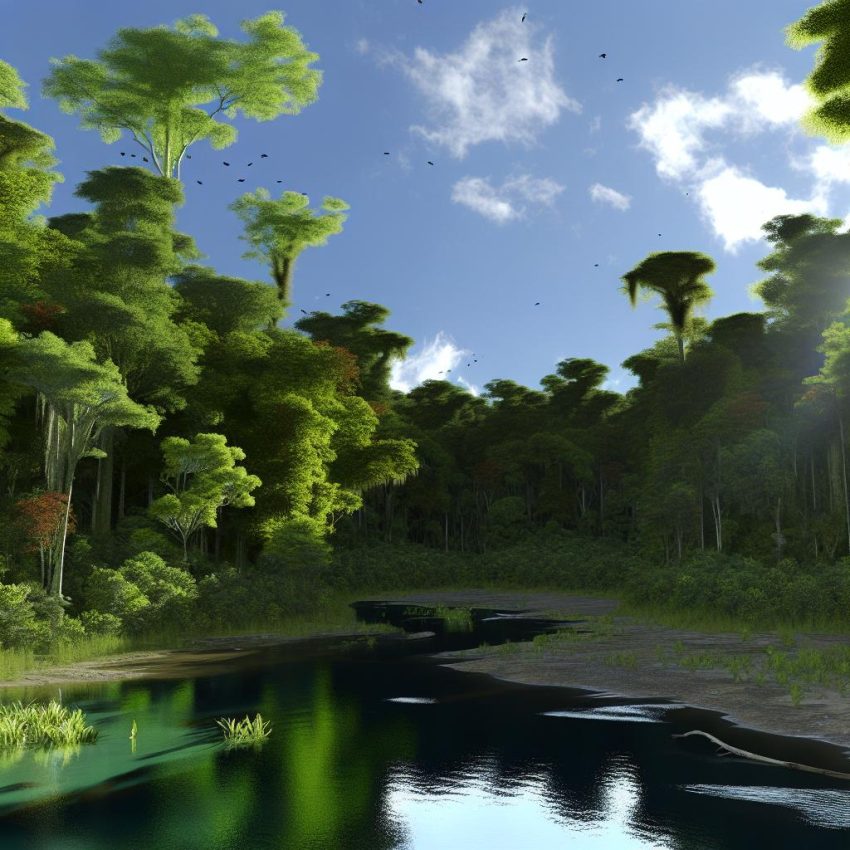Introduction to El Impenetrable National Park
El Impenetrable National Park, located in the Chaco Province of northeastern Argentina, is a notably expansive protected area. Established in 2014, the park covers approximately 1,300 square kilometers, rendering it one of the largest national parks in Argentina. This verdant region is distinguished by its dense forest, diverse wildlife, and ongoing conservation efforts aimed at preserving its natural richness.
Geography and Climate
Nestled within the Gran Chaco region, El Impenetrable National Park is characterized primarily by flat terrain and a semi-arid climate. This geographic area is noted for its unique ecological attributes. Summers in the park are typically hot, with temperatures frequently soaring above 40°C (104°F). In contrast, the winters are relatively mild, providing some respite from the heat. The majority of annual precipitation occurs during the summer months, which plays a vital role in nourishing the park’s rich biodiversity.
Flora
The vegetation within El Impenetrable National Park is a diverse mix, encompassing elements of dry forest, savanna, and wetlands. These ecosystems support a wide variety of plant species, including several that are endemic to this region. Important flora within the park includes the quebracho colorado, a hardwood tree that is renowned for its durability and ecological importance. Additionally, the carob tree is prevalent and plays a significant role in maintaining the local ecosystem, offering sustenance and habitat for various animal species.
Fauna
El Impenetrable serves as a refuge for a remarkable array of wildlife, contributing to its status as a crucial conservation area. The park provides habitats for numerous endangered species, such as the yaguareté (a sub-species of jaguar) and the giant armadillo, both of which are pivotal to the region’s ecological balance. Other noteworthy residents of the park include the elusive tapirs, the semi-aquatic capybaras, and a diverse array of bird species. The rich biodiversity of El Impenetrable makes it a prime destination for wildlife enthusiasts and researchers eager to explore its natural wonders.
Conservation Efforts
The creation of El Impenetrable National Park marked a significant milestone in the conservation of the Gran Chaco’s unique habitats. Efforts within the park focus on protecting endangered species and implementing sustainable management practices designed to preserve its diverse ecological systems. The park forms a key part of several regional conservation projects aimed at mitigating the impacts of deforestation and habitat fragmentation. These concerted efforts underscore the importance of safeguarding this rich ecological treasure for future generations.
Tourism and Access
Despite its remote location, El Impenetrable National Park offers a distinct opportunity for ecotourism, drawing visitors interested in experiencing its unique natural beauty. However, accessing the park can be challenging due to its isolation from major urban centers. Several tour operators facilitate guided excursions, providing an immersive experience that allows visitors to appreciate the park’s extraordinary landscape and wildlife. For additional information, you may find it beneficial to visit the official Parques Nacionales Argentina website.
Challenges and Future Prospects
El Impenetrable National Park faces several significant challenges, foremost among them being threats from illegal logging and changes in land use in the surrounding areas. Efforts to address these issues involve collaboration between authorities and conservation organizations, aiming to enhance surveillance and promote community involvement in conservation activities. Looking towards the future, initiatives are being developed to balance the park’s conservation needs with sustainable tourism and local community development, ensuring a viable path forward for both the park’s ecosystems and the people who rely on them.
Conclusion
As a vital reserve for Argentina’s biodiversity, El Impenetrable National Park stands as a testament to the country’s commitment to environmental conservation. Its establishment has significantly advanced the preservation of the unique ecosystems within the Gran Chaco. For the park to continue serving its critical ecological role, ongoing efforts in conservation and sustainable management are imperative. These endeavors aim to protect and nurture the park’s natural resources, ensuring they remain intact and vibrant for the enjoyment and benefit of future generations.

